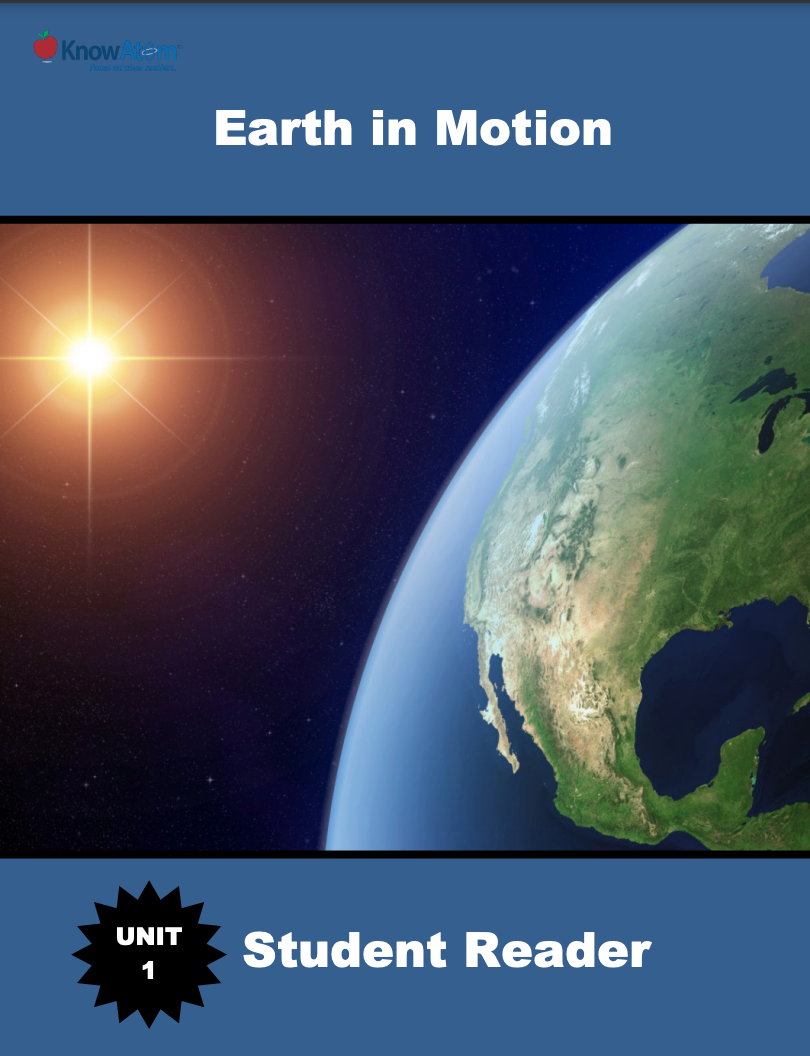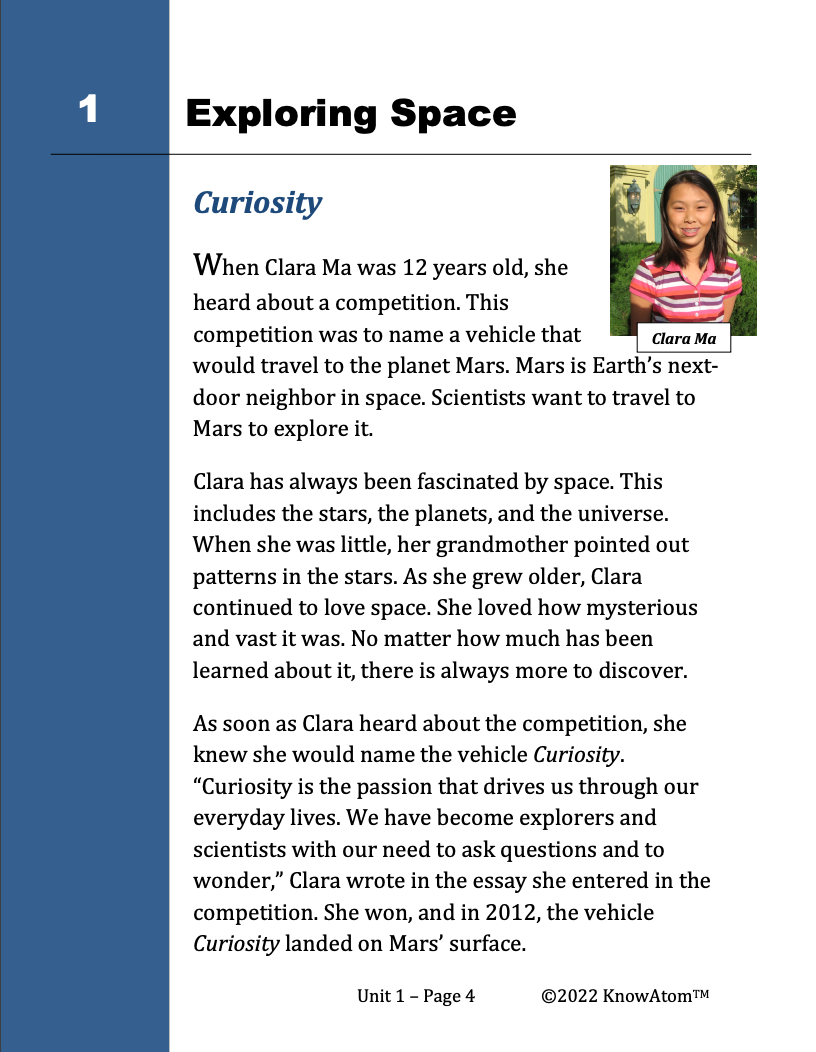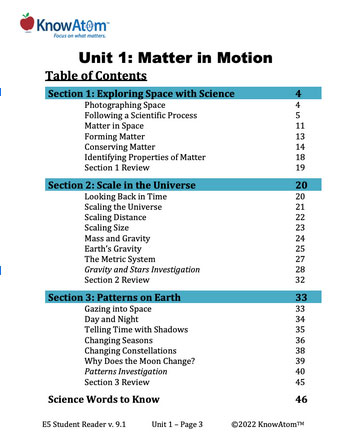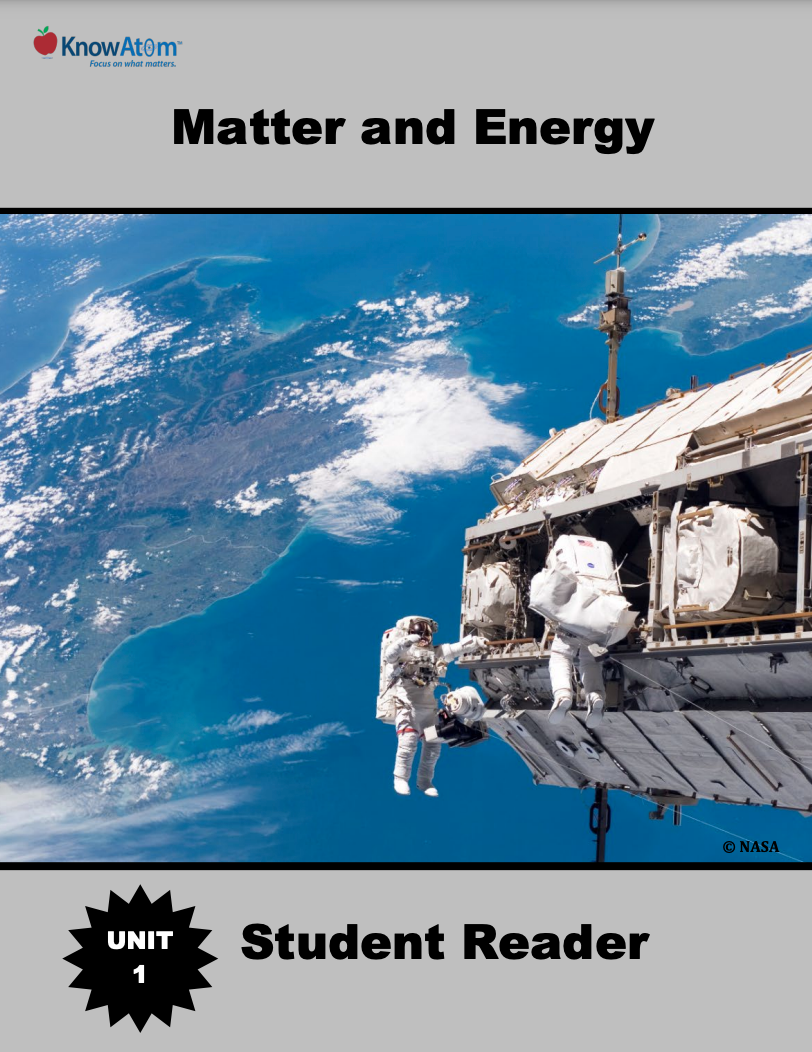
In 3rd grade, students ask questions and conduct experiments to explore the world around them. In this unit, students unpack the phenomena of tiny particles called atoms that make up all matter in the universe. This page showcases key parts of the first lesson in this unit.

In this unit, students use the scientific process to analyze Earth’s place in the solar system. They begin by modeling how matter is made up of tiny particles called atoms, and changes state when heat is added or removed. This page provides an overview of lesson 1B in which students explore the science phenomena of how heat affects matter.

In this unit, students are introduced to the scientific process as they analyze matter in the universe and Earth’s place in the solar system. For the first lesson in this unit, they conduct an experiment to compare the masses of two different substances, analyzing how matter is never created or destroyed. Students also discuss how all matter in the universe is made up of different combinations of atoms formed from chemical reactions. This page highlights key parts of this lesson.

In this unit, students discuss the science phenomena of how matter has different properties depending on the number and kind of atoms that make it up. In this lesson, they observe how forces act on matter, focusing on how unbalanced forces cause objects to move. This page provides a high-level extract of this lesson.
Standards citation: NGSS Lead States. 2013. Next Generation Science Standards: For States, By States. Washington, DC: The National Academies Press. Neither WestEd nor the lead states and partners that developed the Next Generation Science Standards were involved in the production of this product, and do not endorse it.